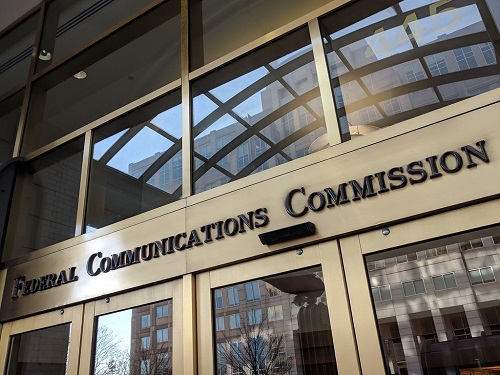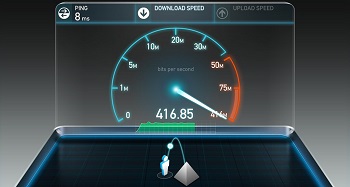
Fast, affordable Internet access for all.

As we approached the new year, and after more than a decade of criticism, the FCC finally moved to tackle the agency’s long-dated definition of broadband with an eye on nudging the industry toward faster broadband deployments. But many industry watchers say the belated reform inquiry arrives late and long after other agencies have filled the void left by a lack of FCC leadership.
The FCC’s Notice of Inquiry (NOI), issued in November, asks whether the agency should finally adopt 100 Mbps (megabit per second) downstream, 20 Mbps upstream as the new standard U.S. definition of broadband.
“Ultimately, I believe it is essential in the United States to set big goals in order to get big things done,” FCC boss Jessica Rosenworcel said in a statement. “That is why we are kicking off this inquiry to update our national broadband standard to better align it with the standards in pandemic-era legislation of 100 Megabits per second down and 20 Megabits per second up and also set a long-term goal for gigabit speeds.”
But there’s nothing about the FCC’s planned definition that’s “big.”
Of particular annoyance to long-time industry watchers is the agency’s continued adherence to an upstream standard that remains out of touch with modern needs. While Senators and consumer groups had pushed for a symmetrical definition of 100 Mbps, cable industry lobbyists managed to convince the FCC to lower the upstream bar dramatically.

Cable broadband speeds are notoriously topheavy, with downstream speeds far in excess of upstream speeds. While full duplex DOCSIS technology is supposed to eventually remedy that, the technology remains far from widespread deployment.
In this week’s round-up of broadband news, we culled three stories we think are worth reading.
How Much is Fast Enough?
The first is a story from Ars Technica – FCC chair: Speed standard of 25Mbps down, 3Mbps up isn’t good enough anymore – written by veteran IT reporter Jon Brodkin.
For years now, broadband-for-all advocates have lamented the FCC’s minimum broadband speed standard of 25 Megabits per second (Mbps) download and 3 Mbps upload as being laughably antiquated. Indeed, it’s been almost three years since we made the case for Why 25/3 Broadband Is Not Sufficient, though it was outdated long before then.

But as Brodkin reported this week, the FCC’s minimum speed standard “could finally change under Chairwoman Jessica Rosenworcel, who is proposing a fixed broadband standard of 100Mbps downloads and 20Mbps uploads along with a goal of bringing affordable service at those speeds to all Americans.”
Under Rosenworcel’s plan, the FCC would look at availability, speeds, and prices to determine whether the agency should take regulatory actions under Section 706 of the Telecommunications Act, which requires the FCC to determine if high-speed Internet access is being deployed "on a reasonable and timely basis" to all Americans.
Now that there’s broad consensus high-speed Internet connectivity should be universally accessible, there’s no shortage of broadband news/content floating around out there.
There’s the wheat (more truthful, useful, and informative stuff); the chafe (a mundane grain of truth buried under a steaming pile of bs), and a vast spectrum of perspectives in between.
In this new space we will highlight insightful news stories, blog posts, podcasts, or videos we’ve come across over the past week or so – with an eye to separate the signal from the noise.
Downloading now …
What Happened to Gigi?
While the FCC has been defanged in many ways, the agency is still at the center of our shared telecommunication ecosystem. So when President Biden nominated Gigi Sohn to serve as the fifth and final commissioner to break the 2-2 partisan deadlock at the agency, numerous consumer and public interest groups were ecstatic. The nation’s telecommunication workers backed her nomination. She even had the respect and quiet support of a number of conservative lawmakers.
But her nomination was sunk by a vicious smear campaign, which led her to withdraw herself from consideration in March.
At the Broadband Communities Summit in May she described the process both like being put in a “washing machine full of rocks” and going through “a 16 month proctology exam.”
We see this question from time to time as one of the nuts and bolts parts of building a new network: where does insurance come into play? New infrastructure is, after all, expensive.
Doug Dawson answers this question clearly and comprehensively in a recent post. The short of it is that in the vast majority of instances, damage for the conduit and fiber portions of the network get covered either by FEMA or the utility provider that owns the poles. This is, he notes, separate from the buildings and other non-cable/conduit portions of an outside plant, which are often covered by some sort of insurance.
There are certainly insurers that will do it, but Doug advises thoughtful cost accounting before making a decision. It’s good advice, especially since it looks like at least some of the insurance industry is eyeing the billions in new federal infrastructure money as a way to diversify their portfolios.
One thing that Doug’s piece doesn’t cover is security threats, which have certainly been on the rise over the last few years. As our electric and information grid infrastructure continues to grow closer and bad actors see opportunities to go after small ISPs with fewer resources, the cost of disruption and downtime may change the motivation for network insurance.
Watch the Episode 39 of Connect This! to hear the panel talk a little more about insuring broadband networks.

For episode 13 of our bonus series, “Why NC Broadband Matters,” we’re joined by Doug Dawson (Owner and President of CCG Consulting), Catharine Rice (Project Director for the Coalition for Local Internet Choice) and Gene Scott (General Manager of the Outside Plant for the Greenlight Network) to talk about the wave of new federal dollars reaching communities across the country. How do communities avoid feeling overwhelmed and use this money in the most effective ways?
As state laws present challenges for North Carolina municipalities to build their own public broadband networks and provide services, the group discusses how anticipated funds could be used in the state. They talk about potential solutions, looking to communities that have already built networks and speaking with consultants who have spent time in other communities helping them overcome similar obstacles.
We produced this episode and the “Why NC Broadband Matters” series in partnership with NC Broadband Matters, a nonprofit organization advocating for better connectivity across North Carolina.
This show is 45 minutes long and can be played on this page or via Apple Podcasts or the tool of your choice using this feed, at the Community Broadband Bits page, or at the NC Broadband Matters page. We encourage you to check out other "Why NC Broadband Matters" content at the podcast feed so you don't miss future bonus content that may not appear in the Community Broadband Bits Podcast feed.
Transcript below.
We want your feedback and suggestions for the show-please e-mail us or leave a comment below.
Listen to other episodes here or view all episodes in our index. See other podcasts from the Institute for Local Self-Reliance here.
Thanks to Shane Ivers for the Music: What's The Angle? by Shane Ivers - https://www.silvermansound.com a Creative Commons Attribution (4.0) license.